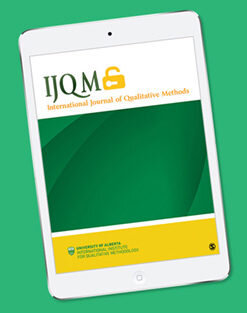Using Secondary Data in Mixed Methods is More Straight-Forward Than You Think
Dr. Daphne C. Watkins
By Daphne C. Watkins
Professor Watkins is the author of Secondary Data in Mixed Methods Research. She is is a professor of social work and a University Diversity and Social Transformation Professor at the University of Michigan. Professor Watkins is also the founding director of the Gender and Health Research (GendHR) Lab and the award-winning Young Black Men, Masculinities, and Mental Health (YBMen) Project, which leverages technology to provide mental health education and social support for young Black men. She currently directs the Vivian A. and James L. Curtis Center for Health Equity Research and Training at the University of Michigan.
Study with Dr. Watkins!
Dr. Watkins will offer a new 3-day virtual (and affordable!) workshop on mixed methods research through Instats June 14-16, 2023. Click here for more info. She will also offer a two-week in-person and hybrid mixed methods program through the University of Essex Summer School in London.
Novice researchers assume they are not really doing research if their process does not involve collecting data. However, more seasoned researchers know this could not be further from the truth. While writing my 2022 book, Secondary Data in Mixed Methods Research, I took a deep dive into the origins of secondary data and its strengths and limitations for use in mixed methods studies. Under certain circumstances, you must demonstrate your ability to undergo the complete research cycle, from beginning to end, including idea conception, data collection, data analysis, and reporting. But beyond these isolated occurrences, secondary data are available and worth consideration when addressing your research questions.
Secondary data can help you become more familiar with a topic you do not know. When I ask a room full of graduate students about the most fundamental benefits of secondary data, they usually tell me its money and time-saving advantages are what make secondary data most attractive. However, I believe secondary data are an invitation from the original researchers to think more intentionally about our research questions outside our typical (albeit limited) boundaries. Furthermore, having a chance to work with data you did not collect can offer you an insider perspective of someone else’s research design, its strengths and weaknesses, and its ability to answer research questions that may or may not have been in the minds of the original researchers. An inside view of secondary data can also teach budding researchers about the decisions they will make when someday leading their own research projects.
Easy-to-follow instructions do not always accompany secondary data sets. Therefore, your ability to sift through data records and make sense of the available information associated with secondary data sets is essential. In this post, I briefly cover the advantages and disadvantages of using secondary data in mixed methods research, how to prioritize secondary qualitative and quantitative data in a mixed methods project, and the role of theory in mixed methods with secondary data.
In research, there are at least two types of data: primary and secondary. Primary data refer to data collected in the present moment for a specific project; they are also known as "original" or "raw" data. On the other hand, secondary data have previously been collected by you or someone else and can be used for a project now or in the future. Secondary data can take various forms, such as publicly available data like the U.S. Census or smaller, privately-owned data like those from a local after-school program. The distinction between primary and secondary data also involves a time element because it is possible to collect and use primary data for secondary purposes. However, no set amount of time must pass before primary data can be considered secondary. The only distinguishing factor is whether there is a fundamental research question to answer and whether the data to address that question already exists. For instance, if data were collected a year ago to answer one research question and are now being used to answer a different research question, those data are considered secondary data being used for a secondary purpose.
Secondary data in mixed methods research is the process of identifying, evaluating, and incorporating one or more secondary qualitative or quantitative data sources into a mixed methods project. Incorporating secondary data expands on the original definition of mixed methods research, which involves collecting, analyzing, and integrating qualitative and quantitative approaches to study a research problem from multiple perspectives. Conducting a mixed methods project can lead to a more comprehensive understanding of the problem being studied because qualitative methods provide insight into the experiences and perspectives of individuals, while quantitative methods provide statistical findings and help to generalize findings. The use of secondary data in mixed methods research broadens the purpose of secondary data analysis, which is to analyze existing data by addressing research questions similar to or different from those for which the original data were collected.
Incorporating secondary data into your mixed methods research will let you make good use of data that already has time, resources, and energy investments. But a common question is how theory should be used in mixed methods with secondary data. Your purpose statement, research questions, and prioritization of either the quantitative or qualitative phase of the study should guide decisions for how to use theory in your mixed methods with secondary data. For instance, in sequential designs, prioritized phases come before other phases of the study. So, if the quantitative phase of your mixed methods study takes priority, the theory will guide your selection of variables. If the prioritized quantitative phase includes secondary data, the theory used by the original investigators may guide your preliminary selection and understanding of the variables used in those data to answer your research questions. In a mixed methods study where the qualitative phase is prioritized, a conceptual framework is generated to be tested using a subsequent quantitative study. If the qualitative data happen to be secondary, you might use the qualitative concepts from the original researchers to guide your theory construction and then test this theory in a subsequent quantitative phase. So you see, the theory does not take a backseat but rather can play a critical role in shaping the study design for mixed methods with secondary data.
In closing, I want to emphasize the benefits of using secondary data in mixed methods research, such as cost and time savings, not to mention the chance to access larger datasets that may not be feasible to collect as primary data. Additionally, using secondary data can help you triangulate findings and increase the validity and reliability of your results by combining multiple data sources with similar variables and concepts. Whether you are an aspiring researcher or a seasoned scholar, you must know both the benefits and challenges of using secondary data in your research and make informed decisions about whether to use them based on your research questions and goals.
More Methodspace Posts about Mixed Methods



















Learn what to do when you are faced with next steps after coding qualitative data.